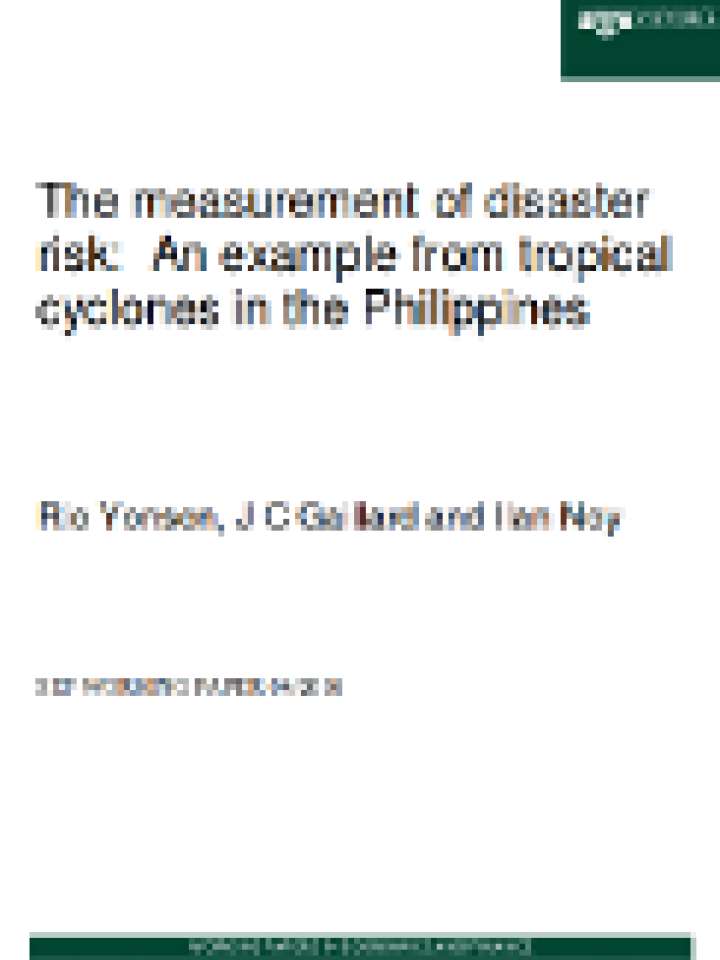The measurement of disaster risk: an example from tropical cyclones in the Philippines
School of Economics and Finance Working Paper 04/2016
This paper analyses what shapes people’s disaster risk exposure, focusing on tropical cyclones and using the Philippines as a case study. It constructs a new provincial level panel dataset, and uses panel estimation methods to assess the influence of socioeconomic (vulnerability), geographic, demographic, topographic (exposure), and meteorological (hazard) characteristics on the resulting fatalities and affected persons from recent tropical cyclones.
Results show strong evidence that socioeconomic development reduces people’s vulnerability and loss of human lives. Further, good local governance is associated with fewer fatalities. Rapid and unplanned urbanisation generates vulnerabilities and increases harm. Exposure, including topography, and hazard strength are likewise important determinants. However, disaster impacts on people appear to be influenced much more by vulnerability and exposure, than by the hazard itself. This paper quantifies this difference in order to contribute to policy planning at national and sub-national scales.
Explore further
